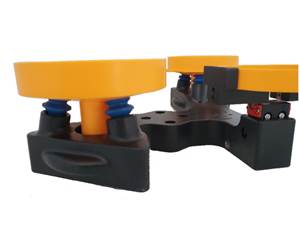Can Manufacturing Simultaneously Add Robots and People?
According to a study released in Germany, the answer is yes.
In addition to quantifiable gains in productivity and quality, automation has consistently proven to increase something else: anxiety. Robotics, thanks in part to the rise of artificial intelligence (AI) have entered into the general public’s and mainstream media’s consciousness with stories that attempt to predict what jobs might become automated, prompting headlines like these:
Given the general tone of the automation discussion lately, you can understand why the headline for a recent press release from International Federation of Robotics (IFR) caught my attention:
So, yeah, consider the source—the IFR certainly has a dog in this fight—but the release concerned a report by the Centre for European Economic Research (ZEW) commissioned on behalf of the German Federal Ministry for Education and Research (BMBF); the latter being presumably interested in an unbiased assessment of the impact robotics have had on the German economy.
Robot density (number of robots/10,000 employees) in Germany in 2017 was 309 units, third highest worldwide. German employment in 2017, meanwhile, registered at 44 million—its highest level since reunification of the country. In the release, Junji Tsuda, IFR’s president, said Germany’s experience with automation applies beyond that country.
“The modernization of production shifts hazardous, unhealthy and monotonous work to the machines. In the vast majority of cases, only certain activities of a job are automated and not the entire spectrum of an employee’s work.”
The ZEW report also noted that if jobs are eliminated due to automation, as 5 percent of employees were replaced within five years, the employment losses were compensated for by new jobs overall. Going forward, ZEW estimates that further automation and digitalization in manufacturing will generate a 1.8% rise in employment by 2021.
Further bolstering its case, the IFR release called out a recently published London School of Economics (LSE) study entitled Robots at Work. Examining the use of industrial robots in 17 developed economies between 1993 and 2007, that study found that over that time, productivity has improved by around 15% due to industrial robots, while the proportion of low-skilled labor dropped and pay increased slightly.
Automation Adoption Accelerates Around the World
In February, IFR released a survey capturing automation levels around the world. Globally, robot density stood at 74 robot units per 10,000 employees, up from 66 units in 2015. Geographically, average robot density in Europe is 99 units, while coming in at 84 in the Americas and 63 in Asia.
Between 2010 and 2016, the average annual growth rate of robot density in Asia was 9 percent, with 7 percent in the Americas and 5 percent in Europe. In Asia, Chinese utilization of robotics is growing in leaps and bounds, jumping from 25 units in 2013 to 68 units in 2016. China’s robot density currently ranks 23rd worldwide, but the government’s goal is to push it into the world’s top 10 most intensively automated nations by 2020.
Robot density in the United States jumped to 189 in 2016, placing the country seventh in global rank. Going forward, robot sales in the United States will continue to increase through 2020, with forecast growth of at least 15 percent on average per year. I suspect that growth in automation will also correlate with in an increase in robot-fear-mongering headlines.Related Content
Ensuring Repeatability: The Key to Effective Injection Molding Automation
One of automation’s key promises is repeatability: the same movement to the same location, time and time again. But to achieve that, all elements involved — robot, machine, EOAT, mold — must be in and stay in alignment.
Read MoreConair: Going All In on AI
Conveying with Optimizer, Conair’s new AI-based conveying technology stands to be a true game changer for plastics processors.
Read MoreBoston Dynamics Stretches Into Autonomous Warehouse Robotics
The robotics company’s second commercial product is designed to take on physically challenging warehouse tasks.
Read More'Smart,' Moisture-Based Drying Technology Enhanced
At NPE2024, Novatec relaunches DryerGenie with a goal to putting an end to drying based on time.
Read MoreRead Next
People 4.0 – How to Get Buy-In from Your Staff for Industry 4.0 Systems
Implementing a production monitoring system as the foundation of a ‘smart factory’ is about integrating people with new technology as much as it is about integrating machines and computers. Here are tips from a company that has gone through the process.
Read MoreMaking the Circular Economy a Reality
Driven by brand owner demands and new worldwide legislation, the entire supply chain is working toward the shift to circularity, with some evidence the circular economy has already begun.
Read MoreSee Recyclers Close the Loop on Trade Show Production Scrap at NPE2024
A collaboration between show organizer PLASTICS, recycler CPR and size reduction experts WEIMA and Conair recovered and recycled all production scrap at NPE2024.
Read More













